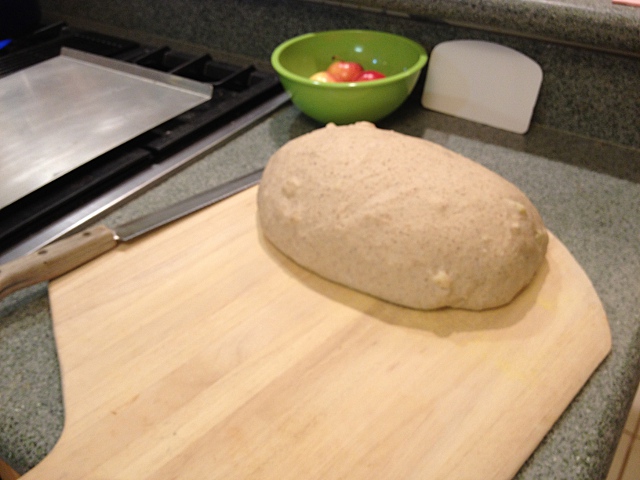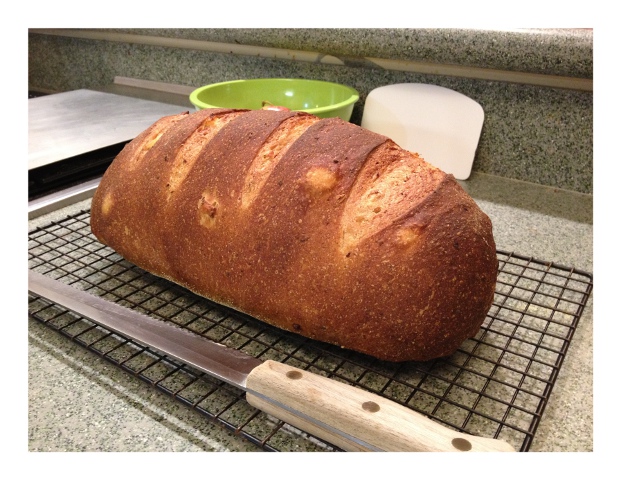Hamelman Roasted Potato Bread
Hamelman's Roasted Potato Bread, with some modifications. I used a bit of my sourdough starter instead of yeast for the pate fermente, and also substituted about 12% rye flour for some of the white.

Note the chunks of potato sticking out the side of the proofed dough - have to cut the potato a bit finer next time.

The finished loaf.
sPh
 Labor Day Bread Medley
Labor Day Bread Medley